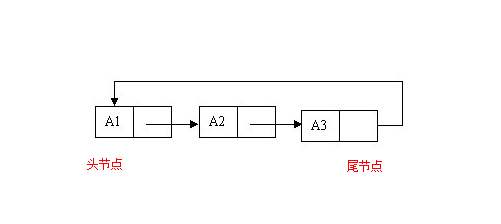Python下利用BeautifulSoup解析HTML的实现
摘要
Beautiful Soup 是一个可以从 HTML 或 XML 格式文件中提取数据的 Python 库,他可以将HTML 或 XML 数据解析为Python 对象,以方便通过Python代码进行处理。
文档环境
- Centos7.5
- Python2.7
- BeautifulSoup4
Beautifu Soup 使用说明
Beautiful Soup 的基本功能就是对HTML的标签进行查找及编辑。
基本概念-对象类型
Beautiful Soup 将复杂 HTML 文档转换成一个复杂的树形结构,每个节点都被转换成一个Python 对象,Beautiful Soup将这些对象定义了4 种类型: Tag、NavigableString、BeautifulSoup、Comment 。
| 对象类型 | 描述 |
|---|---|
| BeautifulSoup | 文档的全部内容 |
| Tag | HTML的标签 |
| NavigableString | 标签包含的文字 |
| Comment | 是一种特殊的NavigableString类型,当标签中的NavigableString 被注释时,则定义为该类型 |
安装及引用
# Beautiful Soup pip install bs4 # 解析器 pip install lxml pip install html5lib
# 初始化
from bs4 import BeautifulSoup
# 方法一,直接打开文件
soup = BeautifulSoup(open("index.html"))
# 方法二,指定数据
resp = "<html>data</html>"
soup = BeautifulSoup(resp, 'lxml')
# soup 为 BeautifulSoup 类型对象
print(type(soup))
标签搜索及过滤
基本方法
标签搜索有find_all() 和find() 两个基本的搜索方法,find_all() 方法会返回所有匹配关键字的标签列表,find()方法则只返回一个匹配结果。
soup = BeautifulSoup(resp, 'lxml')
# 返回一个标签名为"a"的Tag
soup.find("a")
# 返回所有tag 列表
soup.find_all("a")
## find_all方法可被简写
soup("a")
#找出所有以b开头的标签
for tag in soup.find_all(re.compile("^b")):
print(tag.name)
#找出列表中的所有标签
soup.find_all(["a", "p"])
# 查找标签名为p,class属性为"title"
soup.find_all("p", "title")
# 查找属性id为"link2"
soup.find_all(id="link2")
# 查找存在属性id的
soup.find_all(id=True)
#
soup.find_all(href=re.compile("elsie"), id='link1')
#
soup.find_all(attrs={"data-foo": "value"})
#查找标签文字包含"sisters"
soup.find(string=re.compile("sisters"))
# 获取指定数量的结果
soup.find_all("a", limit=2)
# 自定义匹配方法
def has_class_but_no_id(tag):
return tag.has_attr('class') and not tag.has_attr('id')
soup.find_all(has_class_but_no_id)
# 仅对属性使用自定义匹配方法
def not_lacie(href):
return href and not re.compile("lacie").search(href)
soup.find_all(href=not_lacie)
# 调用tag的 find_all() 方法时,Beautiful Soup会检索当前tag的所有子孙节点,如果只想搜索tag的直接子节点,可以使用参数 recursive=False
soup.find_all("title", recursive=False)
扩展方法
| ind_parents() | 所有父辈节点 |
| find_parent() | 第一个父辈节点 |
| find_next_siblings() | 之后的所有兄弟节点 |
| find_next_sibling() | 之后的第一个兄弟节点 |
| find_previous_siblings() | 之前的所有兄弟节点 |
| find_previous_sibling() | 之前的第一个兄弟节点 |
| find_all_next() | 之后的所有元素 |
| find_next() | 之后的第一个元素 |
| find_all_previous() | 之前的所有元素 |
| find_previous() | 之前的第一个元素 |
CSS选择器
Beautiful Soup支持大部分的CSS选择器 http://www.w3.org/TR/CSS2/selector.html, 在 Tag 或 BeautifulSoup 对象的 .select() 方法中传入字符串参数, 即可使用CSS选择器的语法找到tag。
html_doc = """
<html>
<head>
<title>The Dormouse's story</title>
</head>
<body>
<p class="title"><b>The Dormouse's story</b></p>
<p class="story">
Once upon a time there were three little sisters; and their names were
<a href="http://example.com/elsie" rel="external nofollow" class="sister" id="link1">Elsie</a>,
<a href="http://example.com/lacie" rel="external nofollow" class="sister" id="link2">Lacie</a>
and
<a href="http://example.com/tillie" rel="external nofollow" class="sister" id="link3">Tillie</a>;
and they lived at the bottom of a well.
</p>
<p class="story">...</p>
"""
soup = BeautifulSoup(html_doc)
# 所有 a 标签
soup.select("a")
# 逐层查找
soup.select("body a")
soup.select("html head title")
# tag标签下的直接子标签
soup.select("head > title")
soup.select("p > #link1")
# 所有匹配标签之后的兄弟标签
soup.select("#link1 ~ .sister")
# 匹配标签之后的第一个兄弟标签
soup.select("#link1 + .sister")
# 根据calss类名
soup.select(".sister")
soup.select("[class~=sister]")
# 根据ID查找
soup.select("#link1")
soup.select("a#link1")
# 根据多个ID查找
soup.select("#link1,#link2")
# 根据属性查找
soup.select('a[href]')
# 根据属性值查找
soup.select('a[href^="http://example.com/"]')
soup.select('a[href$="tillie"]')
soup.select('a[href*=".com/el"]')
# 只获取一个匹配结果
soup.select(".sister", limit=1)
# 只获取一个匹配结果
soup.select_one(".sister")
标签对象方法
标签属性
soup = BeautifulSoup('<p class="body strikeout" id="1">Extremely bold</p><p class="body strikeout" id="2">Extremely bold2</p>')
# 获取所有的 p标签对象
tags = soup.find_all("p")
# 获取第一个p标签对象
tag = soup.p
# 输出标签类型
type(tag)
# 标签名
tag.name
# 标签属性
tag.attrs
# 标签属性class 的值
tag['class']
# 标签包含的文字内容,对象NavigableString 的内容
tag.string
# 返回标签内所有的文字内容
for string in tag.strings:
print(repr(string))
# 返回标签内所有的文字内容, 并去掉空行
for string in tag.stripped_strings:
print(repr(string))
# 获取到tag中包含的所有及包括子孙tag中的NavigableString内容,并以Unicode字符串格式输出
tag.get_text()
## 以"|"分隔
tag.get_text("|")
## 以"|"分隔,不输出空字符
tag.get_text("|", strip=True)
获取子节点
tag.contents # 返回第一层子节点的列表
tag.children # 返回第一层子节点的listiterator 对象
for child in tag.children:
print(child)
tag.descendants # 递归返回所有子节点
for child in tag.descendants:
print(child)
获取父节点
tag.parent # 返回第一层父节点标签
tag.parents # 递归得到元素的所有父辈节点
for parent in tag.parents:
if parent is None:
print(parent)
else:
print(parent.name)
获取兄弟节点
# 下一个兄弟元素 tag.next_sibling # 当前标签之后的所有兄弟元素 tag.next_siblings for sibling in tag.next_siblings: print(repr(sibling)) # 上一个兄弟元素 tag.previous_sibling # 当前标签之前的所有兄弟元素 tag.previous_siblings for sibling in tag.previous_siblings: print(repr(sibling))
元素的遍历
Beautiful Soup中把每个tag定义为一个“element”,每个“element”,被自上而下的在HTML中排列,可以通过遍历命令逐个显示标签
# 当前标签的下一个元素 tag.next_element # 当前标签之后的所有元素 for element in tag.next_elements: print(repr(element)) # 当前标签的前一个元素 tag.previous_element # 当前标签之前的所有元素 for element in tag.previous_elements: print(repr(element))
修改标签属性
soup = BeautifulSoup('<b class="boldest">Extremely bold</b>')
tag = soup.b
tag.name = "blockquote"
tag['class'] = 'verybold'
tag['id'] = 1
tag.string = "New link text."
print(tag)
修改标签内容(NavigableString)
soup = BeautifulSoup('<b class="boldest">Extremely bold</b>')
tag = soup.b
tag.string = "New link text."
添加标签内容(NavigableString)
soup = BeautifulSoup("<a>Foo</a>")
tag = soup.a
tag.append("Bar")
tag.contents
# 或者
new_string = NavigableString("Bar")
tag.append(new_string)
print(tag)
添加注释(Comment)
注释是一个特殊的NavigableString 对象,所以同样可以通过append() 方法进行添加。
from bs4 import Comment
soup = BeautifulSoup("<a>Foo</a>")
new_comment = soup.new_string("Nice to see you.", Comment)
tag.append(new_comment)
print(tag)
添加标签(Tag)
添加标签方法有两种,一种是在指定标签的内部添加(append方法),另一种是在指定位置添加(insert、insert_before、insert_after方法)
append方法
soup = BeautifulSoup("<b></b>")
tag = soup.b
new_tag = soup.new_tag("a", href="http://www.example.com" rel="external nofollow" )
new_tag.string = "Link text."
tag.append(new_tag)
print(tag)
* insert方法,是指在当前标签子节点列表的指定位置插入对象(Tag或NavigableString)
html = '<b><a href="http://example.com/" rel="external nofollow" rel="external nofollow" rel="external nofollow" rel="external nofollow" rel="external nofollow" >I linked to <i>example.com</i></a></b>' soup = BeautifulSoup(html) tag = soup.a tag.contents tag.insert(1, "but did not endorse ") tag.contents
insert_before() 和 insert_after() 方法则在当前标签之前或之后的兄弟节点添加元素
html = '<b><a href="http://example.com/" rel="external nofollow" rel="external nofollow" rel="external nofollow" rel="external nofollow" rel="external nofollow" >I linked to <i>example.com</i></a></b>'
soup = BeautifulSoup(html)
tag = soup.new_tag("i")
tag.string = "Don't"
soup.b.insert_before(tag)
soup.b
* wrap() 和 unwrap()可以对指定的tag元素进行包装或解包,并返回包装后的结果。
```python
# 添加包装
soup = BeautifulSoup("<p>I wish I was bold.</p>")
soup.p.string.wrap(soup.new_tag("b"))
#输出 <b>I wish I was bold.</b>
soup.p.wrap(soup.new_tag("div"))
#输出 <div><p><b>I wish I was bold.</b></p></div>
# 拆解包装
markup = '<a href="http://example.com/" rel="external nofollow" rel="external nofollow" rel="external nofollow" rel="external nofollow" rel="external nofollow" >I linked to <i>example.com</i></a>'
soup = BeautifulSoup(markup)
a_tag = soup.a
a_tag.i.unwrap()
a_tag
#输出 <a href="http://example.com/" rel="external nofollow" rel="external nofollow" rel="external nofollow" rel="external nofollow" rel="external nofollow" >I linked to example.com</a>
删除标签
html = '<b><a href="http://example.com/" rel="external nofollow" rel="external nofollow" rel="external nofollow" rel="external nofollow" rel="external nofollow" >I linked to <i>example.com</i></a></b>'
soup = BeautifulSoup(html)
# 清楚当前标签的所有子节点
soup.b.clear()
# 将当前标签及所有子节点从soup 中移除,返回当前标签。
b_tag=soup.b.extract()
b_tag
soup
# 将当前标签及所有子节点从soup 中移除,无返回。
soup.b.decompose()
# 将当前标签替换为指定的元素
tag=soup.i
new_tag = soup.new_tag("p")
new_tag.string = "Don't"
tag.replace_with(new_tag)
其他方法
输出
# 格式化输出
tag.prettify()
tag.prettify("latin-1")
- 使用Beautiful Soup解析后,文档都被转换成了Unicode,特殊字符也被转换为Unicode,如果将文档转换成字符串,Unicode编码会被编码成UTF-8.这样就无法正确显示HTML特殊字符了
- 使用Unicode时,Beautiful Soup还会智能的把“引号”转换成HTML或XML中的特殊字符
文档编码
使用Beautiful Soup解析后,文档都被转换成了Unicode,其使用了“编码自动检测”子库来识别当前文档编码并转换成Unicode编码。
soup = BeautifulSoup(html)
soup.original_encoding
# 也可以手动指定文档的编码
soup = BeautifulSoup(html, from_encoding="iso-8859-8")
soup.original_encoding
# 为提高“编码自动检测”的检测效率,也可以预先排除一些编码
soup = BeautifulSoup(markup, exclude_encodings=["ISO-8859-7"])
通过Beautiful Soup输出文档时,不管输入文档是什么编码方式,默认输出编码均为UTF-8编码
文档解析器
Beautiful Soup目前支持, “lxml”, “html5lib”, 和 “html.parser”
soup=BeautifulSoup("<a><b /></a>")
soup
#输出: <html><body><a><b></b></a></body></html>
soup=BeautifulSoup("<a></p>", "lxml")
soup
#输出: <html><body><a></a></body></html>
soup=BeautifulSoup("<a></p>", "html5lib")
soup
#输出: <html><head></head><body><a><p></p></a></body></html>
soup=BeautifulSoup("<a></p>", "html.parser")
soup
#输出: <a></a>
参考文档
https://www.crummy.com/software/BeautifulSoup/bs4/doc.zh
以上就是本文的全部内容,希望对大家的学习有所帮助,也希望大家多多支持【听图阁-专注于Python设计】。

